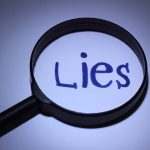

- Home
- Why Us?
- About
- Articles
Featured
Featured
- Recent

The 10 Lies That Varicose Vein Patients Believe in Pittsburgh
by Pittsburgh Vein Doc | Jul 20, 2018 | 0
- Varicose Veins
- Patient Info
- Contact
Select Page
Both spider veins and varicose veins can be treated by sclerotherapy.
Unwanted veins may be treated with the injection of FDA-approved agents such as Sotradecol® (sodium tetradecyl sulfate) or Asclera (polidocanol).
Sclerotherapy involves the injection of these medicines (sclerosants) using tiny needles and syringes.
The sclerosant comes in solution form. It destroys the inside lining (endothelium) of the targeted veins. This causes the vein to eventually shrink and be absorbed by your body.
Many people often ask about saline injections. Saline solutions are rarely used anymore by vein specialists.
Sclerotherapy is a valuable tool in fighting varicose and spider veins.
Sclerotherapy is one of the many options that we discuss when we personalize your individual treatment plan.
Sclerotherapy is an office procedure which is done with minimal discomfort in most cases.
Compression support stockings are worn afterwards for a few days to a week after the procedure depending on the size of the veins.
This helps to minimize helps minimize pigmentation changes in the overlying skin and improve the results.
After the treatment, blood is rerouted to other veins that already exist after the problem vein is sealed.
Your circulation is improved.
Multiple treatments may be required in many cases.
Complications are rare when performed by experienced doctors but include hyperpigmentation, blood clots, ulceration, new veins caused from the treatment (matting) and the recurrence of the treated veins.
Some veins that are treated with sclerotherapy cannot be seen on the skin’s surface. When these veins feed into varicose veins, they may be seen with ultrasound.
This allows the vein specialist to pinpoint which veins are diseased.
You must understand that the veins that are visible on the skin’s surface are like the tip of the iceberg. These deeper veins tend to be the actual cause of the surface veins.
These are source veins and which are the actual cause of the spider or varicose veins that are visible.
We always address the source or the root of your vein problem.
This results in better long-term results.
Ultrasound can help guide the needle into these deeper targeted feeding veins.
Ultrasound guided sclerotherapy is used to seal the vein at the origin of the problem.
Ultrasound guidance is often used when these veins are too tortuous or short to be closed with either laser or radiofrequency heat.
Another indication is to treat the veins that have recurred after the stripping operation.
Both liquid and foam sclerosants can be used in sclerotherapy.
Liquid is the traditional agent. Liquid sclerotherapy is one of the standard treatments for spider veins, reticular (feeding) veins, and very small varicose veins.
Foam was developed to allow doctors to treat larger varicose veins as it covers a larger surface area inside the vein.
Often the medicine which comes in solution form can be made into a foam by mixing it with air to make it more effective for treating larger veins.
The foam can push the blood out of the way to lessen the dilutional effect and make complete contact with the entire vein wall.
Foam sclerotherapy is considered the “standard of care” method for treating branching and superficial varicose veins along with phlebectomy.
Rather than mixing with the blood as the liquid solution does, foam displaces blood within the vein and produces faster and more effective results. The air in the foam can also be visualized on the ultrasound.
This enables the doctor to know the correct amount of foam that is needed to close all of the abnormal veins.
There is a maximum limit of the medication that can be given per treatment.
Therefore, multiple treatments may be necessary to close all of the varicose or spider veins.
Often two to four treatments are necessary.
Sclerotherapy may be combined with phlebectomy (removal of varicose veins through needle holes) to minimize the number of treatments and make them more effective.
This combined procedure is a great aid in preventing recurrence. Both spider veins and varicose veins can be treated by sclerotherapy.
The strength of the medication and the amounts of medication injected vary depending on the size and location of the treated veins.
Over time, new abnormal veins may develop requiring further treatments. Dr. Kavic will determine which solution will be most appropriate for each patient.
Insurance covers the treatment of large, symptomatic varicose veins if certain criteria are met. Spider veins are considered cosmetic are not covered unless they have bled.
After sclerotherapy, you can return to work right away. Normal activities can be resumed immediately.
Take the next step, contact the Kavic Laser and Vein Center today.
Take the next step, contact the Kavic Laser and Vein Center today.
Links to Important Medical Affiliations and Societies
Dr. Kavic is associated with several medical societies and accreditation groups.
Dr. Kavic is associated with several medical societies and accreditation groups.